Email: China's Advanced Joint Manipulation - Angela Lee Vs Xiong Jing Nan - Fight I! (14.7.2024)7/14/2024 This is the first of a trilogy of absolute classic fights! Jing Nan (竞楠) is known in the West as the "Punching Panda". A Panda Bear is known in the Chinese language as "Da Xiong Mao" (大熊猫) or "Great Bear Cat". It seems that the ideogram "熊" (Xiong) - or "Bear" - has been added as a prefix to her name. Angela Lee - although ethnically "Chinese" - was born in Singapore and has since migrated to the West - becoming steeped in the Western interpretation of Asian martial arts. Jing Nan, however, is from Mainland China and is steeped within the martial traditions of that country! Perhaps she is trained in "Bear" qigong - similar to the "Bear" being the animal spirit that permeates our Hakka family style. Whatever the case, the idea of joints being strengthened so that no pain is felt when pressure is applied - exists in our style and the example seen above should be closely studied. Angela Lee expected her opponent to "give-in" once the arm-lock was applied (typical of the Western MMA attitude) - but seems to have psychologically and physically collapsed (despite a rest between rounds) when this was not the case! The Chinese diaspora spans the world. China, however, possesses over a billion people and is the spiritual and material source of ALL Chinese culture! Taiwan is a US colony that can be dismissed for the irrelevancy that it is. A similar assessment can be applied to post-1945 Japan and South Korea. Mainland Chinese fighters are tough, hard and highly disruptive of the Western dominance of Asian martial arts. Indeed, China is an important statement of indigenous martial culture in the face of a racialised misrepresentation. Whatever the case, the Western attitudes (which include the Japanese influence in Brazilian Jiujitsu) imbued within the mind-set and physical technique demonstrated by Angela Lee is thoroughly overturned and defeated in this fight! Jing Nan is a credit to China and the martial arts world!
0 Comments
On Fri, 8 Mar 2024, at 11:57, Charles Johnson wrote: March 8, 1971: My father took me along with him to the Shrine auditorium to see the first fight between Muhammad ali and Joe Frazier. No fight since has captured the magic of that fight. Two men, both undefeated, and each with a claim of the heavyweight title. And the fight was great. One of my fondest memories with my father. My Reply: When I was young, my Dad got me boxing videos (VHS) which went back to bare knuckle days in the UK - and forward to the US Black domination of the art. Jack Johnson landed a single right upper cut on the body of Tommy Burns that lifted him clean off his feet! More remarkably, Burns landed back on his feet and carried on fighting! I encountered 'The Fight' through those videos and remember Fraser's left hook that floored Ali (my Dad called him both Clay and Ali). That single punch changed history - and Ali would continue after this setback and prove he was one of the greatest! My Dad taught me bare knuckle boxing and said 'They can hurt you and they can kill you - don't worry about the second one - don't show the effects of the first one and win in that way!' My Dad understood that Western Boxing specialised in punching and that I needed this to supplement the (Longfist) gongfu kicking I was learning. Interestingly, part of my background has involved the management of violence and thuggery. The UK has a weird mixture of uplifting Socialism (currently under attack) and crushing capitalist oppression. Yin and yang. I have witnessed lots of violence but never been to a professional boxing match - like that which you describe so touchingly. What you have written touched my heart - and is a clear example of your writing ability. Respect to your father - I feel that I met him in those few, well-chosen lines. My problem when young was that I had learned Chinese martial arts movements - but did not yet possess the understanding (or experience) to make them work in combat (I literally 'bounced-off' opponents who remained more bemused rather than hurt or put-off). I learned quickly that Westerners did not like kicking - so that gave me an edge (and to be weary of Gypsy people - as they are tough). In the old days, Chinese gongfu involved kicking practice for a long time (low, middle and high) before punching was introduced. The opposite to how martial arts are taught today - at least in the West. My Dad, instead, took me to two professional football games both involving Leicester City (he used to play for them in his youth) - and a Cricket game (Cricket is an old Celtic game that my Dad got good at in his youth despite it being dominated by the middle class snobs who could afford proper clothing) featuring Leicestershire County Cricket Club that was playing in Glastonbury (possibly against Glamorgan). I was once struck on the head by a Cricket bat and can attest to its efficacy! The boy ran away because I stood looking at him. The lump on my forehead was significant to say the least. The Boxers of old taught me to be strong - whilst Black people taught me 'not to show it'. Still, Ali and Frazer inspired me for different reasons and in different ways. I was surprised to find that Fraser's right shoulder was permanently damaged and he had to throw an Orthodox straight right like a jab - but with no real power behind it (as a range-finder). This is why he put so much effort into his smashing lead-left hook! Fraser was also very humble and a true gentleman (important in the UK). It was the politics of Ali I liked. He just happened to wed this with the beat - all round - boxing skills the world has ever seen. I know that Bruce Lee used to watch videos of Ali dancing around the ring - and copied this movement - integrating it into his Jeet Kune Do. I also know that Ali sparred with a high-ranking US Karate-Do practitioner (after his retirement) and was still too-quick for the younger Karate man! When I got older, I got bigger and stronger. I became 'nasty' in my own way - particularly as a teenager. I looked mean and hungry - mostly because I was hungry - literally. My family did the best they could in trying circumstance - and yet when I came to live in London amongst affluent people - I could not believe how much food they had to eat! I used to live on about one-third of what they ate - and still pushed myself physically and mentally to prevail. This is why Tommy Hearns inspired me. I copied his 'punching' ability to augment my kicking ability. In the old Longfist Style - kicking is considered more important than punching due to historical reasons in ancient China. I think many old Masters carried swords or spears in their hands - and so kicking supplemented the use of weapons. However, Master Chan Tin Sang (1924-1993) - who had fought and killed Imperial Japanese soldiers in Hong Kong during WWII - understood that 'punching' was important in the modern world and helped me devise an internal method for replicating what Tommy Hearns quite naturally did. I think Master Chan had seen how effective Karate-punching was as displayed by the Japanese - and it made him think about improvements. When i left home at 16 to go into further education - I encountered many more Black people and found that being able to fight was a respected ability. After some brutal encounters with my brothers - we became very good friends! They respected the ability 'not to show it' - and diplomatic relations developed from their.
Blogger's Note: Chinese language sources state that these finds (linked above) were discovered in 1997. The article below is from the truncated English language news service broadcast from China. This is a very significant find as it suggests the Han Chinese were not only present throughout Xinjiang during the 7th century CE - but ruled this area as part of the Tang Dynasty Empire. Furthermore, it is clear that Xinjiang was part of China before the rise and spread of the religion of Islam in the Middle East. In other words, prior to the spread of Islam to the Uyghur people - and the entry of these people into Northwest China - Xinjiang was part of the Chinese Imperial System. Today, Uyghur Muslims enjoy religious freedom and all the benefits of Chinese Citizenship living within a modern Chinese society. ACW (4.3.2024) Source: Xinhua Editor: huaxia 2024-03-04 URUMQI, March 4 (Xinhua) -- A previously anonymous epitaph discovered in 2022 in northwest China's Xinjiang Uygur Autonomous Region has been identified as paying tribute to a high-ranking Tang Dynasty (618-907) official, local authorities said.
From May to November 2022, the Xinjiang Institute of Cultural Relics and Archaeology and Academia Turfanica carried out a rescue excavation of the east Badamu cemeteries, exploring 11 Tang Dynasty tombs, including one large tomb that contained the epitaph. In the Tang Dynasty, the central government strengthened its rule over the Western Regions by establishing the Grand Anxi Frontier Command and the Grand Beiting Frontier Command to administer the Western Regions. The front face of the tombstone was inscribed with nearly 700 characters, but only around 480 characters could be identified. A thorough investigation identified the owner of the tomb to be Cheng Huan. Cheng hailed from Handan City in Hebei Province, north China, and was the deputy commander of the Grand Beiting Frontier Command when he died at 63 in Xizhou -- referring to the Turpan area in Xinjiang today, according to Zhang Hailong, with the Academia Turfanica. The finding indicate the Tang Dynasty central government's effective governance of the Western Regions, a discovery which is of great value to the study of the local military and political institutions. Experts said that from Cheng's career experience, it can be seen that the Tang Dynasty official system was effectively implemented in the Western Regions. Chen Qiwen, also with the Academia Turfanica, said, apart from the epitaph, many painted clay figurines, pots, pottery lamps, and beads were unearthed from Cheng's tomb, which proved that the inheritance and use of calligraphy in the area followed the cultural characteristics of the central plain areas of China. Within the Movie ‘Merry Christmas Mr Lawrence’ a Japanese POW Camp Commandant decides that the prison population of European (military) inmates are ‘spiritually lazy’. When being beaten or made to stand for hours in the sun had not altered this situation, the Japanese Officer decided that the Camp population would undergo the Shinto ritual of ‘Misogi’ (禊) – in this instance – involving a 24-hour fast-period of no eating or drinking. This is despite the daily ration being intolerably low to start with. Most prisoners – even the stronger men – were on the brink of starvation. The Japanese Officer (Captain Yanoi) – by further depleting the starvation rations - would also adhere to this ritual of ‘fasting’ whilst traditionally dressed - and sat in meditation in the Camp ‘Dojo’. This is the pristine training hall used by the Japanese Officers for martial arts and spiritual practice (a mixture of Buddhist and Shinto spiritual traditions). Similarly, in the book ‘Empire of the Sun’ written by JG Ballard – the (civilian) POW Camp (Assistant) Commandant (Sergeant Nagata) occasionally orders Chinese vagrants (often women and girls) to be ‘beaten to death’ by Japanese soldiers wielding wooden clubs. The actual 'Commandant' - Hyashi - was in fact a 'civilian' and a careerist diplomat who tended to only interfere in Camp daily activities if absolutely necessary. Obviously, Hyashi never interfered in Nagata's brutality. These starving Chinese people sit patiently outside the POW Camp waiting to see if they will be allowed in to receive a portion of the already meagre rations. The women and girls are often raped by the Japanese guards before the Camp populace of British people are assembled to watch the unfolding ritual of ‘despatch’. Sergeant Nagata believes the British POWs are ‘spiritually lazy’ and seeks to stimulate their individual (and collective) ‘ki’ (氣) flow. This ‘life force’ not only flows through each individual body – but also through the entire Camp. As Sergeant Nagata believes the Chinese people to be an ‘inferior race’ – their brutal murder (achieved through a demonstration of ‘Japanese’ manly vigour) – will ‘release’ the ‘ki’ from their (broken) bodies and supplement that available throughout the Camp. The two primary Shinto rituals on display in both of the above examples are: 禊 (Misogi) – Purification (Cleansing) of the inside and outside of the mind and body. 祓 (Harae) – Purification (Exorcism) of corruption out of the interior of the mind and body. As this ‘Kanji’ is in fact comprised of ‘Chinese’ ideograms, I can read these characters and give some type of explanation as to what these rituals are supposed to represent – at least in a historical context. I say this as the rubric of Japanese ‘spiritual’ fascism distorted (for decades) rituals and practices that would normally not have been so severe or murderously brutal. Bear in mind that within ten-years of WWII being over – Western students of Judo, Kendo and Karate-Do were avidly volunteering to undergo these rituals – albeit in a non-war setting. Nevertheless, the rituals that the Imperial Japanese used to torture and murder millions of Western and Asian people – are today routinely considered part and parcel of a legitimate Japanese martial arts practice. On the face of it, this is an extraordinary rehabilitation. As Chinese ideograms, these ‘Kanji’ characters can be read as follows: a) 禊 (xi4) is comprised of an upper and lower particle: Upper Particle = 气 (qi4) – refers to ‘energy’, ‘breath’ and ‘vital force’ Lower Particle = 米 (mi3) – denotes husked ‘rice’ that needs to be ‘cooked’ (transformed) in water Therefore, 禊 (xi4) suggests that the process of cooking rice in a cauldron (by lighting a fire underneath and boiling the water) not only produces nutritious food (which sustains all physical life) but also generates ‘steam’ as a useful and yet crucial by-product. This steam - through the (hidden) ‘pressure’ created - ‘lifts’ the lid of the cauldron with an effortless ease. It is this ‘unseen’ influence of a physical process that drives this concept. b) 祓 (fu4) is comprised of of a left and a right particle: Left Particle = 礻(shi4) is a contraction of ‘示’ (which denotes an ‘altar’ and the ‘rituals’ associated with it) – and refers to structured acts of ‘instruction’, that require ‘attention’ and possess great ‘importance’. Lower Particle = 犮 (ba2) denotes a ‘dog’ (犬 – quan3) that is ‘running’ (丿- pie3). The implied meaning is to perform a dramatic task with the appropriate amount of effort and required energy. This suggests that a religious ritual must be correctly performed (as if in a temple or at an altar) in the physical world - that opens a connecting door-way to the spiritual world. Once this channel has been correctly opened – the influence of the spiritual world is then allowed to positively flow (unseen) into the material world – thus influencing temporal events. Correct (disciplined) and timely action in the physical world is the basis of this concept. Success is defined as achieving an exact ritualistic replication that does not deviation from the accepted norm – as ‘deviation’ of any sort is tantamount to ‘ill-discipline’. Conclusion Armed with this knowledge, it can be suggested that the Japanese concept of ‘禊’ (Misogi) refers to arduous physical activity that requires ‘sweating’. Through hard and continuous labour – a definite and positive metamorphosis is produced in the material world – that possesses definite (but ‘hidden’) implications for the inner world (almost as a side effect). By way of comparison, ‘祓’ (Harae) refers to a metaphysical ritual that although partly physical in its ritualistic content, remains nevertheless ‘metaphysical’ in nature and intent. This is because ‘祓’ (Harae) constitutes a ‘purifying’ spell achieved through words, actions, and a specific and certain state of mind.
The Island known as ‘Okinawa’ lies off of the South-West coast of Japan - forming part of the Ryukyu Island Chain - and is expressed in Japanese (Kanji) ideograms as ‘沖縄’. This name may be deconstructed as follows: a) oki (沖) = expanse of open water b) nawa (縄)= rope or thread The name appears to be a direct description of the numerous islands that comprise ‘Okinawa’ – which are themselves a substantial (Southern) part of the larger Ryukyu Island Chain. Perhaps the geographical placement and general shape of the islands was seen from high mountain-tops, surveyed in passing ships and/or observed from upon high by those who flew in the ‘Battle Kites’ known to exist within medieval Japan. Whatever the case, the Okinawa Island Chain is said to resemble a meandering rope lying across the surface of the water. I have read that this area first became known to China under the Sui Dynasty (581-618 CE) – but was not formally recognised by the Imperial Court until the Tang Dynasty (618-907 CE). This is when diplomatic and cultural contact with the King (of what was then termed the 'Liu Qiu' [琉球] Islands) was established - known today by the Japanese transliteration of 'Ryukyu'. 琉 (liu2) = sparkling-stone, jade, mining-stone (from previously uncultivated land), precious-stone, arriving, and breaking through (to a place far away - and situated on the fringes of the known world) 球 (qui2) = beautiful-jade, polished-jade, refined-jade, jade percussion instrument, earth, ball, and pearl. The Chinese Mariners must have been taken with the beauty of the Ryukyu Islands - as the term '玉' (yu4) – or ‘jade’ - appears as the dominant left-hand particle of both ideograms forming the name ‘Liu Qiu’. From the Tang Dynasty onwards, the Liu Qiu Islands were considered a distant (but important) part of the Tributary System of Imperial China. In return for a continuous show of annual respect (usually in the form of expensive gifts and/or elements of trade, etc) China shared her extensive culture. It was not until 1872 CE, however, that Imperial Japan took decisive action to annex all of the ‘Ryukyu’ Islands – and it was around this time that the term ‘Okinawa’ was developed to describe the Southern two-thirds of the Ryukyu Island Chain – now a ‘Prefecture’ of Japan. This history explains why the ideograms for ‘Okinawa’ are written in (Japanese) ‘Kanji’ - and are not obviously ‘Chinese’ in structure (as is the far older name of ‘Liu Qiu’). Is it possible to ‘reverse-engineer’ the Kanji ideograms associated with the name ‘Okinawa’ (沖縄) and work backwards as it were – to the original Chinese ideograms? The answer is ‘yes’ – as such an exercise might well shed some more light on the meaning of the name itself. Japanese - 縄 (nawa) = Chinese – ‘繩’ (sheng2) When adjusted in this manner - the Japanese name of ‘Okinawa’ (沖縄) is rendered into the Chinese language as ‘Chongsheng’ (沖繩). Whereas the first ‘Kanji’ ideogram of ‘沖’ (oki) remains identical with its Chinese counterpart of ‘沖’ (chong) - the second ‘Kanji’ ideogram (縄 - nawa) undergoes a substantial modification (繩 - sheng). From this improved data a more precise definition of the name ‘Okinawa’ can be ascertained through the assessment of the Chinese ideograms that serve as the foundation of the Kanji ideograms – working from the assumption that this meaning is still culturally implied through the use of ‘Kanji’ in Japan – even if such a meaning is not readily observable within the structure of the ‘Kanji’ ideograms themselves. 沖 (chong1) is comprised of a left and a right particle: Left-Particle = ‘氵’ which is a contraction of ‘水’ (shui3) – meaning water, river, flood, expanse of water, and liquid, etc. Right-Particle = ‘中’ (zhong1) refers to the concept of something being ‘central’, in the ‘middle’, or being perfectly ‘balanced’. It can also refer to an ‘arrow’ hitting the ‘centre’ with a perfect ease. Therefore, the use of 沖 (chong1) in this context - probably refers to an object that centrally exists within a body of water. 繩 (sheng2) is comprised of a left and right particle. Left-Particle = ‘糹’ which is a contraction of ‘糸’ (mi4) – meaning something that resembles a ‘silken thread’, a ‘thin’ and ‘flexible’ cord, a ‘rope’ or ‘string’, etc. This may also refer to the act of ‘weaving’ or to an object (like a rope, string, or strand) which is ‘woven’ into existence – perhaps implying a ‘cohesion’ attained through an ‘inter-locking’ agency, etc. Right-Particle = ‘黽’ (meng3) – this was originally written as a depiction of a type of frog – but evolved to be used generally to describe the act of ‘striving’, ‘endeavouring’, or ‘working hard’ (nin3). However, I am of the opinion that more practical attributes are at work in this instance. An old (but simplified) version of this ideogram is ‘黾’ – which demonstrates a clarification of what used to be a ‘frog’: This explains why there is said to be an ‘upper’ and ‘lower’ element to this particle: Upper-Element = ‘口’ (kou3) – signifies an ‘open mouth’, ‘entrance’, ‘mouth of a river’, and ‘port’. This can also denote a ‘boundary’ and a ‘hole’ or ‘indent’. This used to represent the head of a frog. Lower-Element = ‘电’ (dian4) – denotes ‘forked-lightning’, ‘energy’ and ‘electricity’, etc. Although evolving from the body of a frog – this element conveys not only the overt power of lightning – but perhaps retains something of the ‘shape’ of forked lightning in its usage as a noun. Perhaps 繩 (sheng2) is a descriptive term used to describe a port that allows entry to a string of islands which seem to take the shape of a rope that geographically unfurls - like forked lightning traversing the sky. Conclusion The term ‘Chongsheng’ (沖繩) – or ‘Okinawa’ - probably refers to a string of islands (and ports) which exist within a broad expanse of open sea - like a rope floating upon the surface of the water (the shape of which resembles that of forked-lightning). This place may be difficult to reach – and the people encountered may be very hard working. It is highly likely that these islands seem to float like a frog on the surface of the water – hence the selection of these ideograms. Of course, the post-1872 Japanese Authorities chose to use the Kanji ideograms of ‘沖縄’ to convey the concept and meaning of the name ‘Oki-Nawa’. In Chinese language texts, I do not see Okinawa referred to as an isolated unit of geographical description. This is because Chinese literature refers to the entire Chain of Islands by the far older and more traditional name of 'Liu Qiu' (琉球) – which was politically acknowledged through ancient diplomatic exchange. Furthermore, it is interesting to note that the post-1872 Japanese Authorities did not abolish this Chinese name – but borrowed it – simply transliterating it into the now well-known ‘Ryukyu’ Islands. Okinawa is only around two-thirds of the Southern-Central area of the Ryukyu Islands – but as far as the ancient Chinese were concerned, the ‘King of Ryukyu’ was the ‘King’ of the entire geographical area defined by this term. Whereas the Chinese term is prosaic (poetically speaking of ‘jade’ and ‘unexplored’ land – the Japanese term might well be practical as it seems to be describing the ‘rope’ that is extensively used in sailing ships, boats, and other floating entities – including the requirement to ‘moor’ such objects in purpose-built ports. The difference in the two-names probably reflects the developing socio-economic conditions prevalent throughout the Island Chain at the time of conception – with around 1500 years separating the development of the two names. Chinese Language Text:
Japanese Karate-Do (General) - 'Mawashi-Uke' (廻し受け): Mawa (廻) = rotation, turning, rounded and circular, shi (し) = four-corners, all-areas and comprensive-cover U (受) = receive, meet, accept and stoically bear (suffer) Ke (け) = stratagem, plan, calculation and measure Okinawan Goju Ryu Karate-Do - 'Toro Gushi-Uke' (虎口受け): Toro Gushi (虎口) = literally 'Tiger-Mouth' envelopes the enemy - and closes inward from all-sides at once U (受) = receive, meet, accept and stoically bear (suffer) Ke (け) = stratagem, plan, calculation and measure Southern China Gongfu Equivalent: Double Butterfly Open-Palm = 双蝶掌 (Shuang Die Zhang) Okinawan Goju-Ryu 'condenses' many of these Southern Gongfu Movements for efficiency. Long stances are shortened whilst reaching arm-movements are brought closer to the body (perhaps adapted for practitioners spending long periods on boats). Many Hakka Gongfu Styles originating in the North progressed through this adaptation process in South China. Our Family Style did not - but virtually all the Clan Styles around our village did. Tora - Tiger - can also be pronounced 'Koko'. In Fujian this can be 'Ho Kho'. Sometimes, despite the literal interpretation of 'Tiger Mouth' - it is used in Chinese and Japanese texts to mean 'Jaws of Death! The Chinese text states that Goju Ryu is a genuine transmission of 'Nan Quan' (Southern Fist). 攻防一体虎口廻受 Attack and defence are integrated - the open tiger's mouth simultaneously envelopes and traps.
Dear Master Charles Johnson I appreciate books like this - particularly biographies. I am also very grateful that you provided me with your Signed Copy. Chinese history in the West is still a work in progress. The issue has been one of developing a recording method that is universal - or at least accessible by non-Chinese people. This allows Chinese culture to be shared with others. Master Woo's biography is constructed just like books in Hong Kong. As a matter of respect, I do not intend to 'comment' in any great detail. Within traditional Chinese culture, lineage is very important (associated with family surname) and great violence can erupt between different Clans. I have found that a strategic 'silence' allows all parties to retain face. I would say that Chinese people do not change their family names easily and do not take such requirements lightly. Indeed, about 20 years ago, I was told about Master Woo by a Chinese person who said that US Immigration misspelt his name (Chin) upon entry and that is how he became known amongst Westerners - although he was still called 'Chin' within the Hakka Cantonese community. Chin, Chan, Tan and Chen (陳) are all the same name. I suspect there is a 'family only' (inner) lineage as well as numerous 'outer' lineages with respect to San Soo (perhaps emphasising different aspects of the art). The inner lineage is not necessarily better - but implies biological (genetic) relationship between members. Family members are automatically entitled to certain things (by birth) that non-family members are not - or have to earn (usually through arduous methods) - depending upon lineage. Of course, being 'Chinese' - none of this is set in concrete. Interestingly, I was introduced to Master Woo as 'Master Chin' in the Hakka language. Furthermore, as we share the same Clan name - we are gongfu Clan brothers. I placed Master Woo's picture on our family shrine.
When running with the weighted rucksack – I use the two broad aspects of Daoist breathing usually termed ‘natural’ and ‘correct’. Bear in mind that this ‘moving’ activity is not the complex seated ‘neidan’ practice and is not subject to that type of control. Instead, as the bodily frame is placed under intense pressure, what is required is deep and full breaths, usually in and out of the mouth. This is because unlike the state of perfect balance that is constructed during the practice of Taijiquan (where the breath is taken in through the nose and expelled through the mouth) - running with a weighted rucksack overloads the biological processes to such a high degree that the maximum amount of oxygen is required to maintain its function. This is achieved by breathing in and out through the mouth. Once the parameters are set, what then is ‘Daoist’ about this practice? Natural breathing requires breathing deeply into the lower abdomen – this emphasises the use of the middle and lower-lung capacity – with the minimum of upper-lung capacity. Correct breathing requires the pushing-up of the diaphragm so that the inward breath is compressed from the expanded lower-lung and into the middle and upper-lung. Correct breathing inflates the usually neglected upper-lung capacity which is full of highly dense oxygen-absorbing body-cells. Generally speaking, the upper-lung is often used by the body in ‘emergency’ breathing if the body has become injured, ill, or is inhabiting an oxygen-deficient environment. The ancient Daoists seem to have understood that there is something special about the little used upper-lung within everyday life – and with this understanding they formulated a physical method of breathing that allows a voluntary access of this area. I tend to use ‘natural’ breathing when running with the weighted rucksack – but I switch to the ‘correct’ method when I need to stop to cross the road and/or significantly change direction. I usually take three full ‘correct’ breaths (which oxygenates the body to a greater degree) and then switch back to ‘natural’ breathing which is what I refer to as ‘maintenance’ breathing. Correct breathing in this context is not ‘maintenance’ breathing and should not be confused with the purpose of ‘natural’ breathing. Furthermore, the perspective I am giving here only makes sense when discussing weighted rucksack running. As weighted rucksack running using ‘natural’ breathing dramatically diminishes the oxygen levels in the body (stabilised through fitness levels) – ‘correct’ breathing represents a rapid intake of new oxygen by switching the emphasis of how the breath is managed.
Author's Note: One of my Western Gongfu students once navigated his way to Sai Kung Town and caught the local bus which travelled in a loop throughout the countryside of Sia Kung. We had given him the name and map coordinates of our Ancestral Village - and he found it - but there was a catch. When he rang the bell in the middle of nowhere to get-off (many of the Hakka villages are hidden from obvious view and must be accessed through a think cover of trees - the bus-driver, seeing that he was alone, refused to open the door. The driver explained that this was a Hakka area and that these people are renowned for their aggressive tendencies. The driver was under strict orders not to let any Westerners (unaccompanied by Chinese people) to get into trouble in areas they do not understand or are not familiar with. Therefore, my student had to safely return to Sai Kung Town. ACW (17.11.2023) Sai Kung is a Hakka coastal area of the North East New Territories where our ancestral Chan Village is (or was) located. The area is now a very well structured National Park. Sai Kung is also a town which lends its name to the region. We have visited many times and never had any trouble navigating. Hundreds of years ago, the migrating Hakka people planted sustainable forests as part of the charcoal trade they pursued. These forests strewn the hills and valleys to this day. We have never heard of hikers going missing - as hikers have no reason to enter these areas. Still, things change and the graphics on the maps contained this episode show where our Gongfu took root in South China after migrating from North and Central China many years ago. The Hakka people who occupied these areas used to be highly aggressive to uninvited guests. This martial attitude stems from the history of the place and the reality of the Hakka-Punti Clan Wars of the mid-1800s which killed millions. This was poor quality land that the Hakka had to cultivate and then defend from Cantonese (Punti) attack.
2023-10-17 Global Times Editor: Li Yan Lined up neatly, over 50 ancient explosive weapons were recently excavated at the Badaling Great Wall in Beijing. A total of 59 stone bombs were discovered by archaeologists along the western section of the Badaling Great Wall in Beijing’s Yanqing district. Ma Lüwei, an archaeologist specializing in ancient Chinese military history, told the Global Times that the stone bombs were major weapons used to “defend against enemy invasion” along the Great Wall during the Ming Dynasty (1368-1644). “The bomb was often installed in medium-sized hollow bits of stone. Those weapons were easy to make and were also very handy for soldiers to throw them down at invaders while standing on the Great Wall,” Ma told the Global Times. Shang Heng, an associate research fellow at the Beijing Institute of Archaeology, said the stone bombs possessed “big explosive power” and were once the preference of Qi Jiguang, a Ming Dynasty military general who made major contributions to China’s military system and strategy as well as the innovation of military weapons. Those 59 stone bombs were found inscribed with orders at one of the Great Wall’s station houses that were once used for standing guards watching out for the enemy. The space was later identified by archaeologists as a warehouse for storing weapons. Prior to the new discovery, no similar “warehouses” had been found along the Beijing sections of the Great Wall. Besides the weapon warehouse, other ancient buildings along the Great Wall, such as a “horse face” wall, an ancient wall used on the Great Wall that allowed soldiers to climb up and shoot arrows, were also discovered during the latest archaeological project. A stone fort that was once used to support cannons was also discovered along the Beijing Great Wall for the first time. Archaeologist Wang Meng told the Global Times that these relics shed light on the functions and design planning of the Great Wall. The new discoveries at the Badaling Great Wall reflect China’s continuous research and conservation efforts concerning the Great Wall. Taking Beijing for example, between 2000 to 2022 more than 110 project were carried out to preserve the Beijing section of the Great Wall, which is known for having the most complex buildings and geological conditions compared to other Great Wall sections such as those in the provinces of Hebei, Gansu and Shaanxi. Twenty-two years of conservation efforts have achieved a great deal. In 2021, a project aimed at rescuing the Liugou section of the Great Wall in the Yanqing district helped identify exactly how the Ming Dynasty Great Wall was constructed. A year later, ancient everyday objects such as plates, scissors and bowls were discovered along the Jiankou section of the Great Wall, providing insight into the daily life of soldiers stationed along the wall. “The Great Wall holds value not only for its remarkable architecture, but also the cultural and historical connections to ancient Chinese people’s lives, their unity as well as their spirit,” historian Fang Gang told the Global Times. Among all the projects, the Great Wall National Cultural Park, scheduled for completion in 2035, is China’s blueprint for integrating Great Wall resources nationwide into one landscape. The strategy aims to preserve the legacy of the Great Wall, while also extending its reach into fields such as cultural tourism. A total of 37 provincial-level planning projects have been carried out so far in 2023. A total of 16 have been completed, including one to promote the establishment of Great Wall museums in Qinhuangdao, Hebei Province. English Language Text: https://www.ecns.cn/m/news/culture/2023-10-17/detail-ihcuappp4688434.shtml
|
AuthorShifu Adrian Chan-Wyles (b. 1967) - Lineage (Generational) Inheritor of the Ch'an Dao Hakka Gongfu System. |

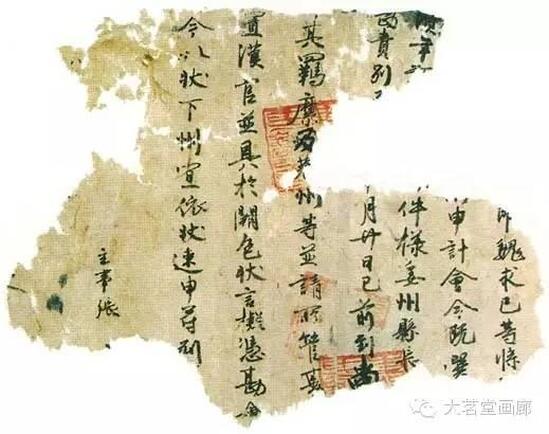
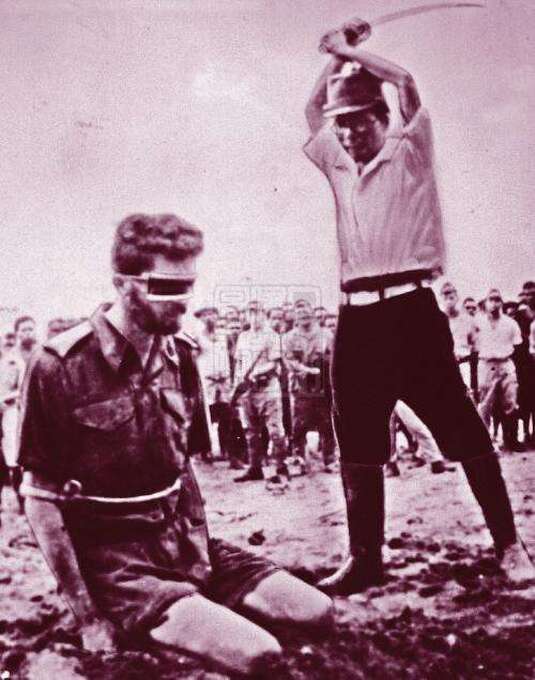
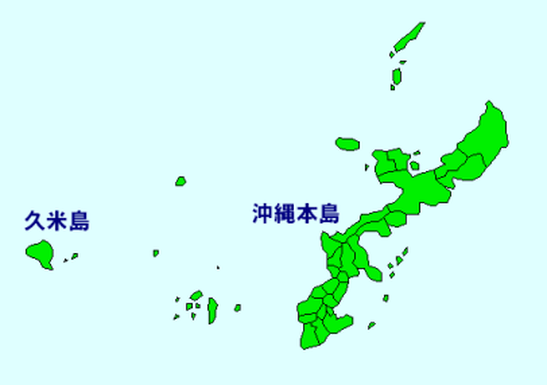

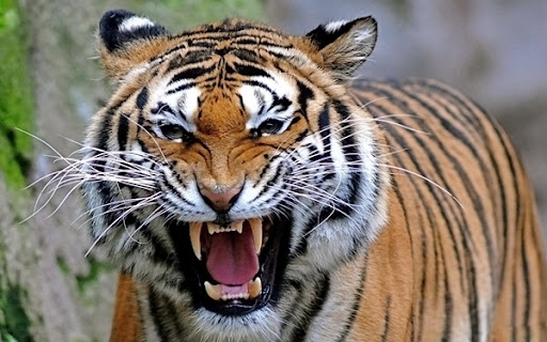
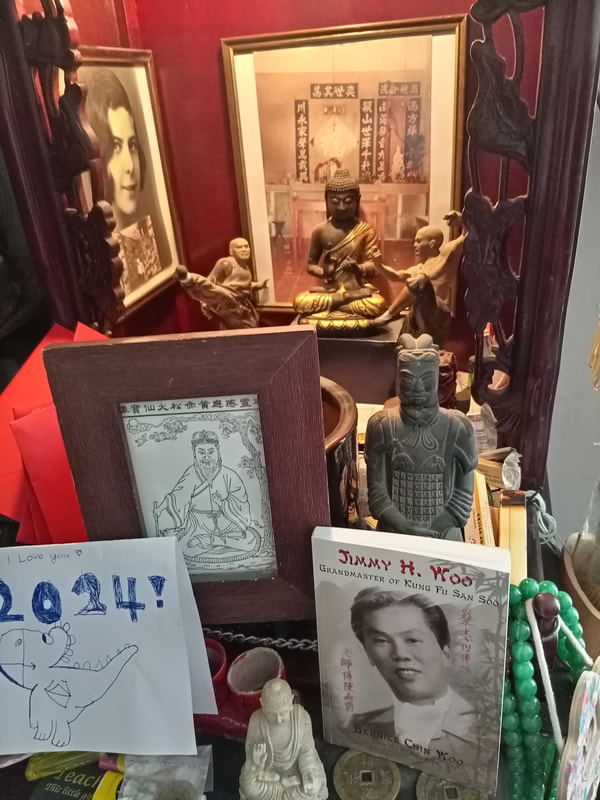

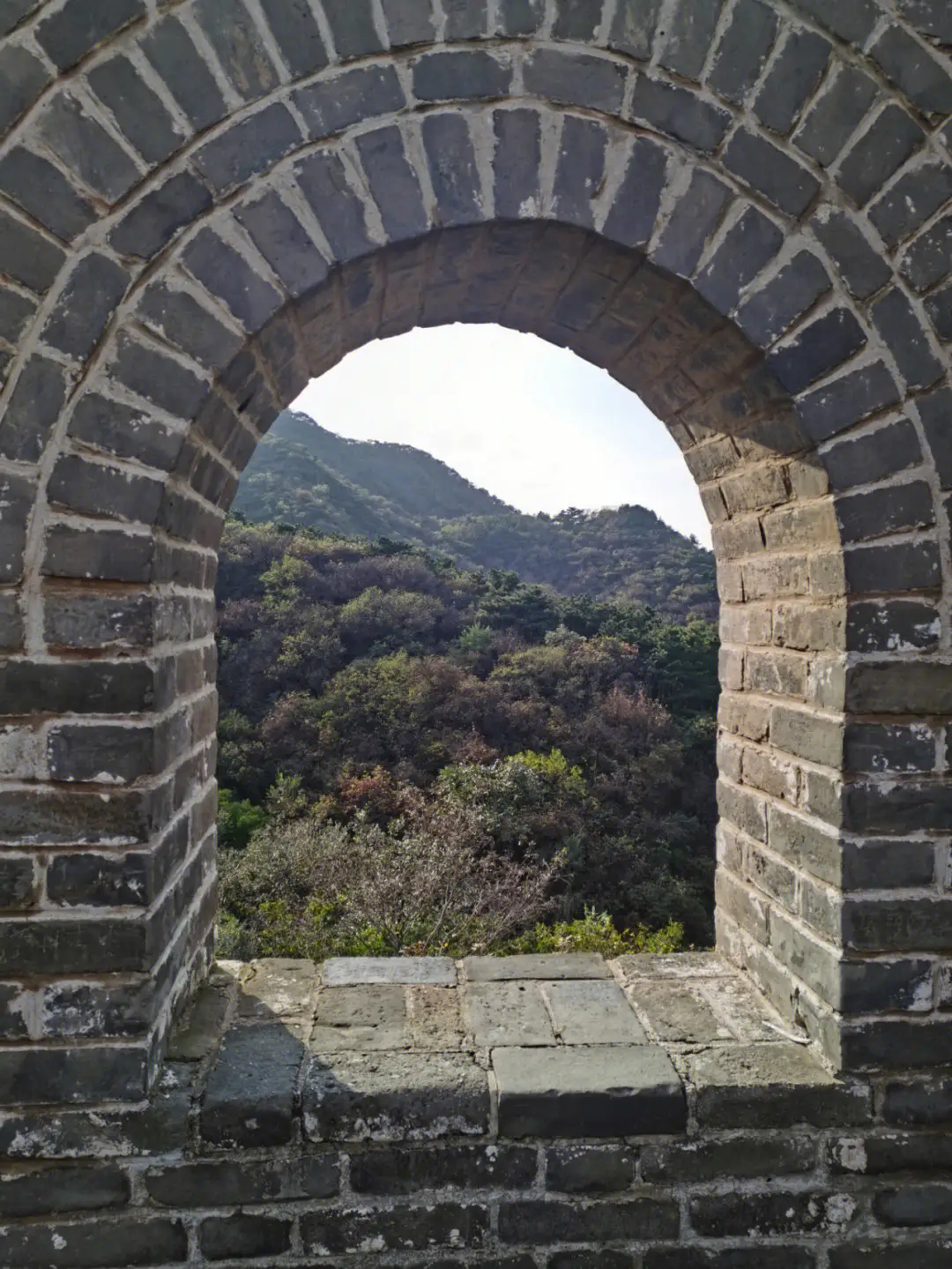
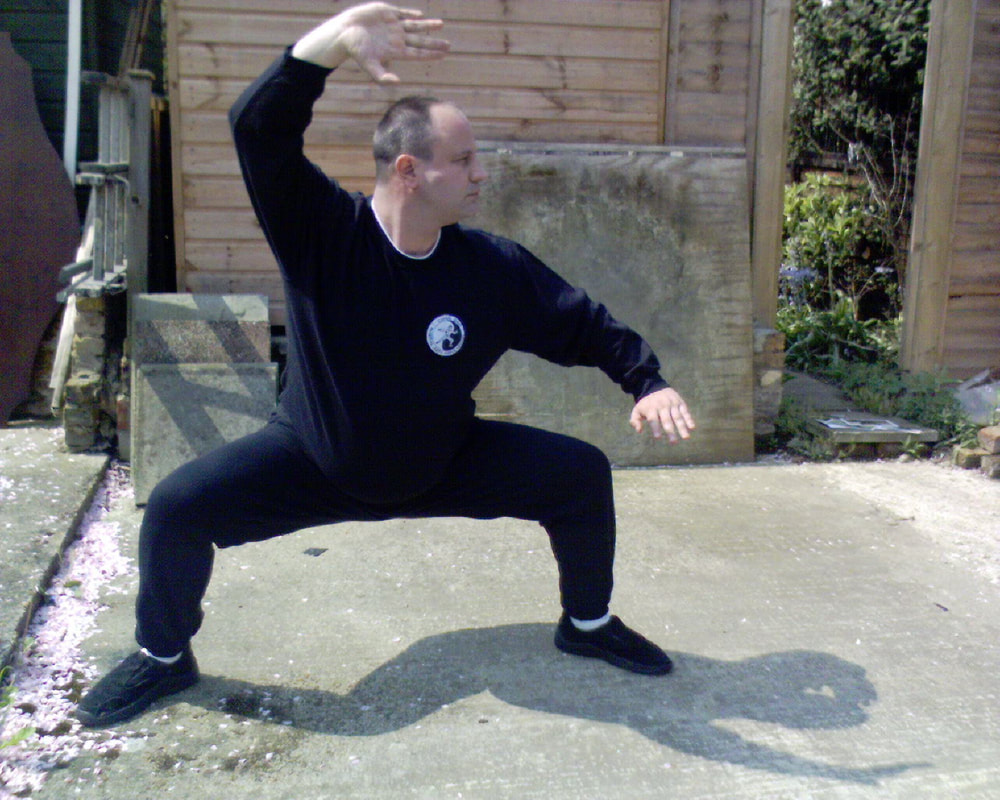
 RSS Feed
RSS Feed